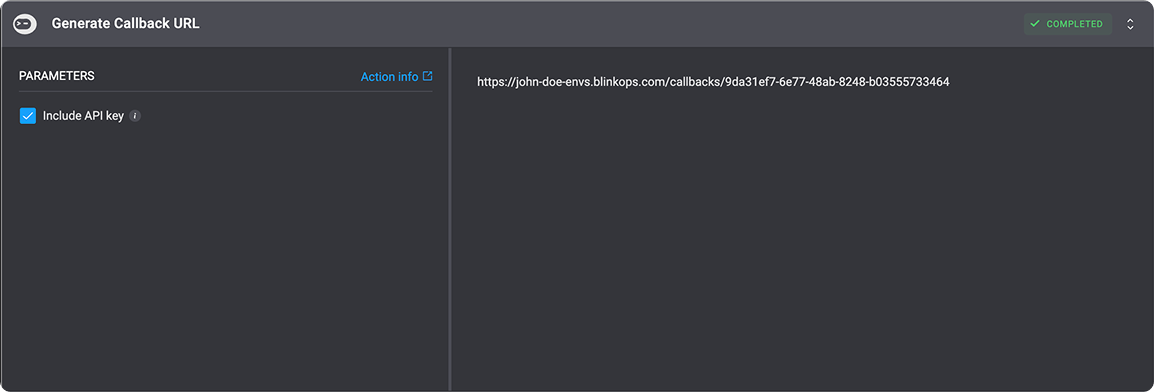- Callback URL API Key – Enable the “Include API Key” option. This creates an API key and embeds it in the callback URL. Use this same key when you send the response.
- Blink API Key – Send the response with a valid Blink API Key that has workflow-execution permissions.
- send it to external system (e.g. via custom http request)
- Add a Wait Action to the following step, to wait for the callback response. Your workflow will pause until the callback request is received. When data is sent to the callback URL, the workflow automatically resumes and continues to the next step, using the data returned by the external system.

Handling Callback Responses in Workflows
After generating a Callback URL using the Generate Callback URL action, immediately after you need to add a wait action to the step step, to pause the workflow execution while the external service completes its process and sends back a request with relevant data upon completion.
Example Use Case
Callback URLs are especially useful in workflows that involve asynchronous interactions with third-party systems. For example, a customer uses blink to automate a support ticket triage:- When an end user submits a support request through the customer’s support portal, a blink workflow is triggered to create a corresponding ticket in the external ticketing system (with a callback URL).
- After creating the ticket, the wait action pauses the workflow, until the ticket is assigned and its SLA is defined on the ticketing system’s side.
- Once those updates occur, the ticketing system sends the relevant details back to blink using the callback URL.
- Blink then resumes the workflow and passes the updated ticket information back to the user.
